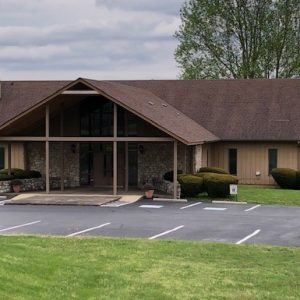The History of Veterans Day

Eisenhower signing of HR7786, June 1, 1954, this ceremony changed Armistice Day to Veterans Day. By U.S. Government – Eisenhower Presidential Library and Museum 1953-1961 photographs, image page, direct image (72-901-1). Public Domain.
Staff Report
World War I – known at that time as “The Great War” – officially ended when the Treaty of Versailles was signed on June 28, 1919, in the Palace of Versailles outside the town of Versailles, France. However, fighting ceased seven months earlier when an armistice, or temporary cessation of hostilities, between the Allied nations and Germany went into effect on the eleventh hour of the eleventh day of the eleventh month. For that reason, November 11, 1918, is generally regarded as the end of “the war to end all wars.”
One year later, in November 1919, U.S. President Woodrow Wilson proclaimed November 11 as the first commemoration of Armistice Day. The day’s observation included parades and public gatherings, as well as a brief pause in business and school activities at 11 a.m.
On November 11, 1921, an unidentified American soldier killed in the war was buried at Arlington National Cemetery near Washington, D.C. On the same day the previous year, unidentified soldiers were laid to rest at Westminster Abbey in London and at the Arc de Triomphe in Paris.
On June 4, 1926, Congress passed a resolution that the “recurring anniversary of (November 11, 1918) should be commemorated with thanksgiving and prayer and exercises designed to perpetuate peace through goodwill and mutual understanding between nations,” and that the president should issue an annual proclamation calling for the observance of Armistice Day.
Commemorated in many countries as Armistice Day, by that time, 27 state legislatures had made November 11 a legal holiday. November 11th became a federal holiday in the United States in 1938, dedicated to the cause of world peace and to be hereafter celebrated and known as Armistice Day. In the aftermath of World War II and the Korean War, Armistice Day became known as Veterans Day.
American effort during World War II saw the greatest mobilization of the U.S. Army, Navy, Marines, and Air Force in the nation’s history (more than 16 million people); some 5.7 million more served in the Korean War.
In 1954, after lobbying efforts by veterans’ service organizations, the 83rd U.S. Congress amended the 1938 act that had made Armistice Day a holiday, striking the word “Armistice” in favor of “Veterans.” President Dwight D. Eisenhower signed the legislation on June 1, 1954. From then on, November 11 became a day to honor American veterans of all wars.

Joseph Ambrose, an 86-year-old World War I veteran, attends the dedication day parade for the Vietnam Veterans Memorial in 1982. Wearing a doughboy uniform like the ones used during the war, he is holding an American flag. It covered the casket of his son, Clement, who was killed in the Korean War. By the Department of Defense. Defense Audiovisual Agency; Scene Camera Operator: Mickey Sanborn – National Archives and Records Administration, Public Domain.
The next development in the story of Veterans Day unfolded in 1968, when Congress passed the Uniform Monday Holiday Act, and the observance of Veterans Day was set as the fourth Monday in October. Confusion ensued, as many states disapproved of this change and continued to observe the holiday on its original date.
Veterans Day continues to be observed on November 11, regardless of what day of the week it falls. The restoration of the observance of Veterans Day to November 11 not only preserves the historical significance of the date, but helps focus attention on the important purpose of Veterans Day: A celebration to honor America’s veterans for their patriotism, love of country, and willingness to serve and sacrifice for the common good.
In 1975, after it became evident that the actual date of Veterans Day carried historical and patriotic significance to many Americans, President Gerald Ford signed a new law returning the observation of Veterans Day to November 11th beginning in 1978.
Veterans Day is a U.S. legal holiday dedicated to American veterans of all wars, and Veterans Day 2025 will occur on Tuesday, November 11, on the 11th hour of the 11th day of the 11th month.
Veterans Day Traditions
In the United States, an official wreath-laying ceremony is held each Veterans Day at the Tomb of the Unknown Soldier in Arlington National Cemetery, while parades and other celebrations are held in states around the country.
Veterans Day is not to be confused with Memorial Day—a common misunderstanding, according to the U.S. Department of Veterans Affairs. Memorial Day (the fourth Monday in May) honors American service members who died in service to their country or as a result of injuries incurred during battle, while Veterans Day pays tribute to all American veterans—living or dead—but especially gives thanks to living veterans who served their country honorably during war or peacetime.





